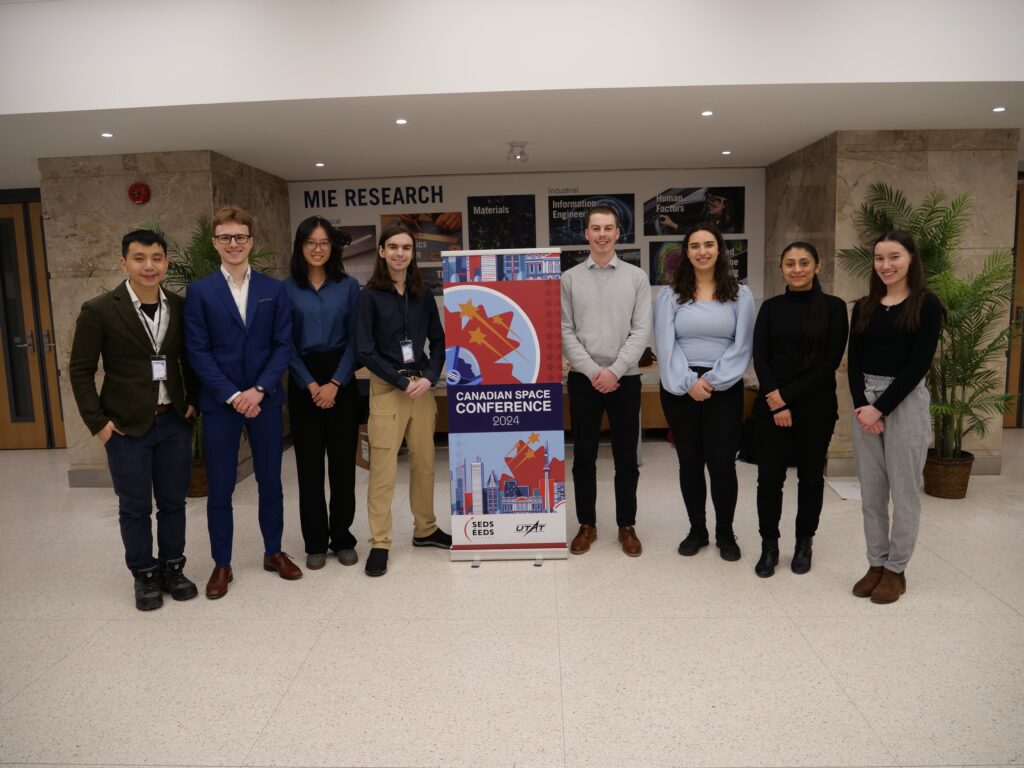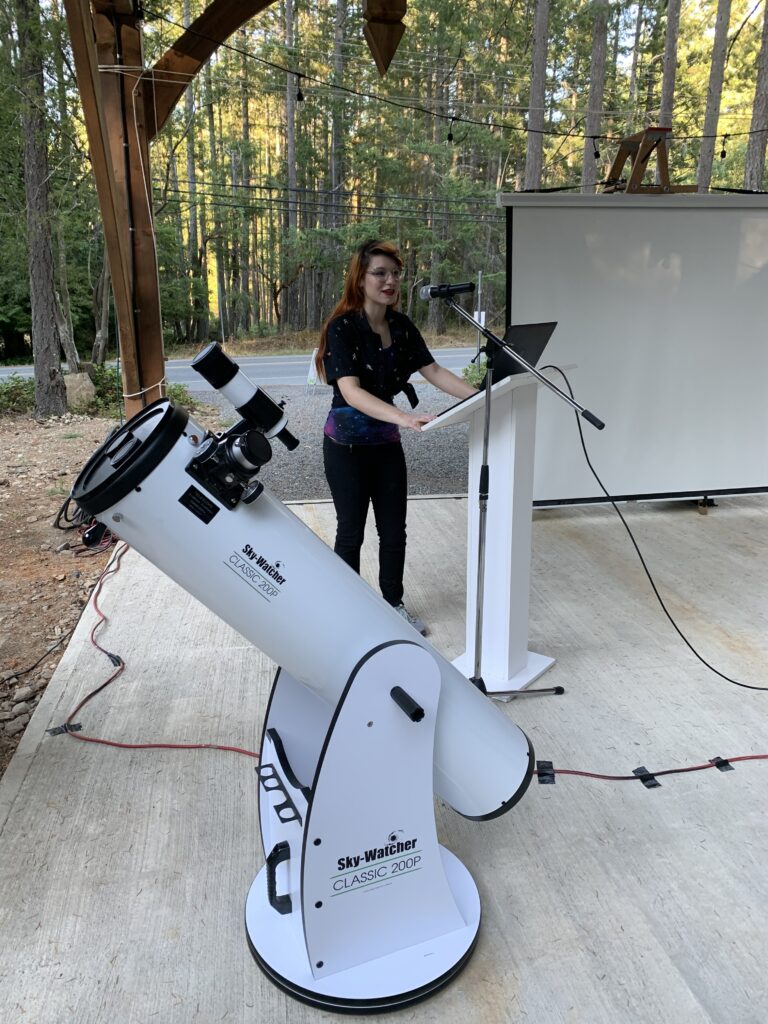What is SEDS-ÉEDS Canada?
Space Industry Opportunities in 2025 Abound for the Students and Early-Career Professionals by SEDS-Canada
By Noordeep Cheema, Ahmad Khan, and Adam A. Lam

SEDS-ÉEDS Canada offers students and early-career professionals a wealth of opportunities to get involved in everything from high-altitude balloon experiments to microgravity research and entrepreneurship challenges.
The national non-profit is set to release the following major initiatives for the Canadian space community across 2025, in addition to occasional local events near regional chapters.
Projects
CAN-SBX: The Canadian Stratospheric Balloon Experiment
The Canadian Stratospheric Balloon Experiment (CAN-SBX) offers a unique opportunity for post-secondary students to explore science and technology at high altitudes. This design challenge aims to inspire undergraduates to push the boundaries of what is possible by conducting experiments in Earth’s stratosphere.
What Is the Project About?
The CAN-SBX Design Challenge allows students to design and test a small scientific experiment flown on a high-altitude balloon provided by the Canadian Space Agency. Participants can develop experiments in astrophysics, Earth’s atmosphere, Earth’s magnetic field, biology, remote sensing, or technology demonstrations.
Who Is Eligible?
Any undergraduate student enrolled at a recognised post-secondary institution in Canada may enter this competition.
Graduate students may join a team but cannot form one independently.
Important Notes:
At least one team member must be a member of SEDS Canada. Students are required to provide proof of enrollment when submitting their proposal.
When Does It Roughly Happen?
The project is currently underway and was launched in late 2024.
CAN-SBX is generally launched around late October each year.
Where Does It Happen?
The stratospheric balloon launches take place in Timmins, ON.
Why Should People Participate?
Participants gain valuable STEM skills by designing an experiment and conducting research in an environment where atmospheric conditions differ greatly from the surface
CAN-RGX: The Canadian Reduced Gravity Experiment
The Canadian Reduced Gravity Experiment (CAN-RGX) Design Challenge focuses on microgravity research. It provides students with the chance to fly their experiments aboard a specially modified aircraft, simulating reduced gravity conditions.
What Is the Project About?
In collaboration with the National Research Council (NRC) and the Canadian Space Agency (CSA), post-secondary student teams design and test small scientific experiments on the NRC Falcon 20. The aircraft simulates microgravity conditions by flying in consecutive parabolas. Two members of each team get to fly with their experiments on board.
Who Is Eligible?
Any student enrolled at a recognised post-secondary institution in Canada may join.
Important Notes:
At least one team member must be a member of SEDS Canada. Students are required to provide proof of enrollment when submitting their proposal.
When Does It Roughly Happen?
The project is currently underway and was launched in late 2024.
CAN-RGX is typically launched around late October each year.
Where Does It Happen?
The current flight campaign is at the NRC’s Flight Research Lab in Ottawa, ON.
Why Should People Participate?
Students gain invaluable STEM experience, the thrill of flying on board a parabolic aircraft, and the chance to conduct research in microgravity—an environment impossible to replicate on Earth.
CAN-ARX: The Canadian Analog Research Expedition
The Canadian Analog Research Expedition (CAN-ARX) takes post-secondary students on expeditions to remote regions of Canada, offering hands-on experience in designing, building, and testing experiments in locations resembling extraterrestrial environments.
What Is the Project About?
CAN-ARX provides participants with the chance to develop an experiment in an analogue environment. Students engage in everything from planning and instrumentation to field testing in rugged terrain.
Who Is Eligible?
Any student enrolled at a recognised post-secondary institution in Canada may apply.
Important Notes:
Participants do not need to be a member of SEDS Canada. Students must provide proof of enrollment at the time of proposal submission.
When Does It Roughly Happen?
The launch of the project is temporarily on hold due to staffing shortages. It is expected to launch sometime around late February to early March 2025, though this is subject to change.
CAN-ARX is generally launched annually, depending on available funding.
Where Does It Happen?
The expedition’s location depends on funding. Past expeditions have taken place in Northern Canada and Baie-Saint-Paul, Quebec.
Why Should People Participate?
Participants travel to Canada’s remote regions, experiencing unique environments ideal for planetary science and instrumentation experiments—critical preparation for future missions to other planetary bodies like Mars.
YSpacE: The Young Space Entrepreneurs Competition
YSpacE fosters entrepreneurship in the Canadian space sector. It challenges post-secondary students to create viable business ideas that address real problems the industry is facing, while simultaneously offering them an avenue to develop crucial business and management skills.
What is the Project About?
The YSpacE competition requires participants to formulate a business plan focusing on a space-related product or service. Through webinars and mentorship, students refine their proposals and learn how to commercialise their concepts.
Who Is Eligible?
Any student enrolled at a recognised post-secondary institution in Canada may apply.
Important Notes:
Participants do not need to be a member of SEDS Canada.
Proof of enrollment must be provided at the time of proposal submission.
When Does It Roughly Happen?
The project will launch around early February, with teams presenting their proposals at the annual SEDS Canada Canadian Space Conference (often hosted in January the following year).
Applications are anticipated to open in mid-January for about a month, though this schedule is not yet confirmed.
YSpacE occurs every other year, typically around mid-year.
Where Does It Happen?
Proposal presentations are held at the annual SEDS Canada Canadian Space Conference.
Why Should People Participate?
Students can contribute directly to Canada’s space sector by creating solutions for actual industry challenges, turning their innovative ideas into profitable ventures.
Events

ActInSpace: Where Innovation Meets Space Exploration
ActInSpace is a global hackathon that draws participants from diverse backgrounds to solve pressing challenges in the space industry. Originating from the French Space Agency (CNES), this event highlights the far-reaching applications of space technology.
What Is ActInSpace?
Teams collaborate on innovative services and products using space data and technologies. Mentors guide participants to transform ideas into functional solutions. Challenges from organisations like ESA, Airbus, and CNES bridge the gap between space innovation and socioeconomic impact.
Who Can Participate?
Entrepreneurs, students, job seekers, developers, and creatives worldwide are invited to join. Technical expertise is not required; the competition welcomes anyone passionate about problem-solving.
When and Where Does It Happen?
• The next ActInSpace will kick off with a 24-hour hackathon on February 28 – March 1, 2025, at multiple locations worldwide, including Canada.
• Semi-finals and finals will be held on April 23–24, 2025, in Bordeaux, France.
• Check SEDS Canada’s website for updates on local events.
Why Should You Participate?
• Unleash Creativity: Work on cutting-edge challenges.
• Gain Mentorship: Collaborate with industry experts.
• Network Globally: Connect with leaders and peers in the field.
• Compete Internationally: Aim to qualify for the finals in France.
• Drive Real Impact: Contribute to the socioeconomic use of space technologies.
SEDS x SGAC Speaker Series: Exploring Space from Multidisciplinary Perspectives
The SEDSxSGAC Speaker Series features leading experts from diverse backgrounds, offering insights into various facets of the space industry. Past webinars covered unique themes, highlighting how science, policy, art, and business all play a role in shaping humanity’s future in space.
Here are a selection of recent webinars, available on SEDS-Canada’s YouTube channel:
Celestial SettlementPresenters:
• Donya Naz Divsalar (Human Systems Engineer, Airbus Defence & Space)
• Dr. Aram Kerkonian (Adjunct Professor, University of Ottawa)
• Alina Pete (Artist & Writer from Little Pine First Nation)
Overview:
This webinar examined the challenges and opportunities of establishing human settlements beyond Earth, drawing on perspectives from STEM, policy, and art. A recording is available on the website.
Earth ObservationPresenters:
• Eric Choi (Business Development Director, GHGSat)
• Alexander Douglas (Intermediate Software Developer, MDA)
• Marcel Morin (Owner, Lost Art Cartography)
• Estelle Chou (Senior Advisor, Policy and Licensing Office, Global Affairs Canada)
Overview:
Panelists explored Earth observation’s role in tackling global challenges, focusing on how technology, policy, and business converge. A recording is available for anyone who missed it live.
Why Should You Participate?
• Diverse Perspectives: Hear from professionals across multiple disciplines.
• Educational Value: Gain deeper knowledge of pressing space topics.
• Networking Opportunities: Engage with experts and enthusiasts alike.
• Inspiration: Discover how art, science, and policy unite to advance space exploration.
Stay tuned for future webinars in the SEDSxSGAC Speaker Series and seize the chance to learn about the latest developments shaping our journey into space.
About the authors
Noordeep is on a mission to reach the stars and bring others along for the ride. As the Director at Large (Events) for SEDS-ÉEDS Canada, she has been helping to organize and plan events like the NASA Space Apps Challenge and the Canadian Space Conference. She has also been an integral part of multiple design teams and clubs at TMU, including MET Rocketry, MARS, ACU, and CASI, where she broadens her horizons beyond the technical realm. When she’s not charting her course through the cosmos, Noordeep fills her world with creativity and adventure. Her home is a gallery of her paintings, she loves exploring new destinations, and is a regular at concerts. While her professional aspirations are sky-high, she stays grounded with her love for Luke Combs’ country music. Noordeep is eager to meet fellow space enthusiasts and make a significant impact on the community with an amazing SEDS-Canada.
Ahmad is an aspiring mathematician studying pure mathematics at Wilfrid Laurier University. He is the Projects Chair at SEDS-ÉEDS Canada, responsible for oversight of all of the non-profits’ national projects, which have a strong focus on research & engineering initiatives. During his spare time, he loves to play chess and billiards and is an aspiring mathematician with hopes of studying differential geometry and topology in the future.
Adam is the President and the Chief Technology Officer of SEDS-ÉEDS Canada. Previously, he was the Vice-President of Communications of SEDS-ÉEDS Canada, where he started the national non-profit’s first blog. He is also proudly the co-founder and co-Editor-in-Chief of The Orbiter magazine. He was inspired to create this magazine from his past experiences in editing and writer, most prominently at The Strand newspaper and magazine at Victoria College at the University of Toronto. He saw the potential of creating the magazine at SEDS-ÉEDS Canada from his work with the incredibly talented illustrators and writers of the Communications Team, and he is proud to have produced the inaugural issue of this magazine with them.
